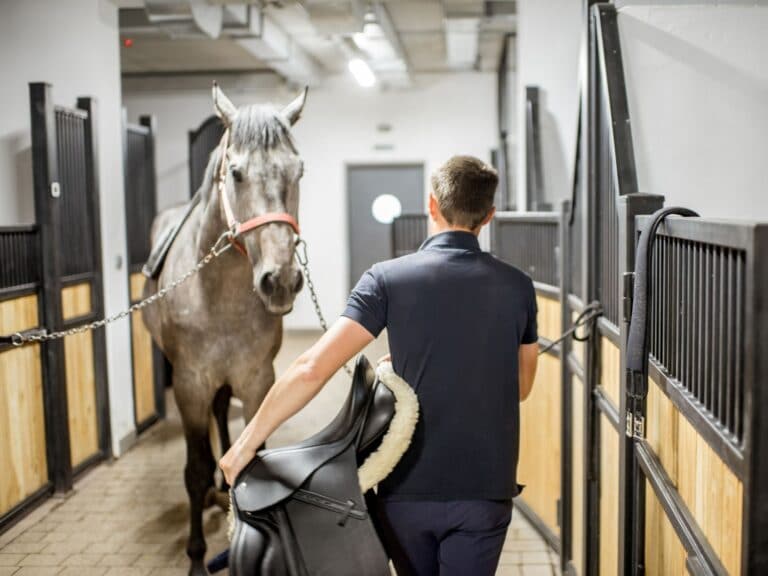All fitters will tell you, and we concur, when looking for a new saddle you need to fit to the horse first, then to the rider. We have listed some of the main considerations for sizing your horse and yourself when making your next purchase.
Gullet Size
Gullet size depends on the size of your horse and all manufacturers measure gullets differently.
We find measuring your horse by taking a ‘wither tracing’ and sending us images of your horses back are most helpful to determine gullet size and panel shape. You can learn how to do this HERE.
We will measure any saddle you wish in a manner that suits you, or as prescribed by your fitter. We can also advise if a particular saddle can be adjusted.
Seat Size
- Less than 16.5″ = 15″ saddle
- Between 16.5″ and 18.5″ = 16″ saddle
- Between 18.5″ and 20″ = 16.5″ saddle
- Between 20″ and 21.5″ = 17″ saddle
- Between 21.5″ and 23″ = 17.5″ saddle
- More than 23″ = 18″ saddle
Knee Rolls
This part of the saddle plays a massive part in rider comfort and position… they can make you feel secure, but they can also put your legs into a position that does not work.
Firstly, ask your instructor about the right knee blocks for you and consider the feel you like to have when you ride. You may be one to like the secure feeling where you seem ‘locked in,’ or you may prefer to have freedom of movement with your leg.
Ideally, the knee block need to mirror the natural angles of the rider’s leg. A knee roll that is too straight for someone with long thighs, will cause hip flexor pain as the block will be restricting the leg. A knee roll that is too long or angled for someone with a short thigh will allow too much space, causing the rider to constantly be searching for their seat.
Above all, you must choose a knee roll that is comfortable for you.
As a general rule…. A long thin legged rider tends to need longer blocks than a short, thicker legged rider.
It’s All About the Angles
What is also important to consider is the angle the blocks sit at must mirror the angle of the rider’s leg. Why is this? Due to gravity and motion while riding the knees naturally gravitate to the block. So, if the block is at the wrong angle it will result in the leg sitting in an unnatural position, creating tension, discomfort and imbalance through the whole body.
Take a look at some photos of your riding and see where you leg sits naturally, was that a comfortable position for you, is that angle allowing the rest of your body to be balanced and aligned ie tipping forward, leaning back, is your lower leg slid too far forward or back?
Other Considerations and Tips
- A rider with longer thighs may need a more forgiving saddle length and knee roll, no matter the size of their seat. As they have long thighs, they may require more space to accommodate the severer angles.
- A rider with short thighs may require a more contained seat length and knee rolls that are straighter, to ensure they are providing the most support.
If you’re still unsure and want advice on your next saddle, contact our friendly team today.



